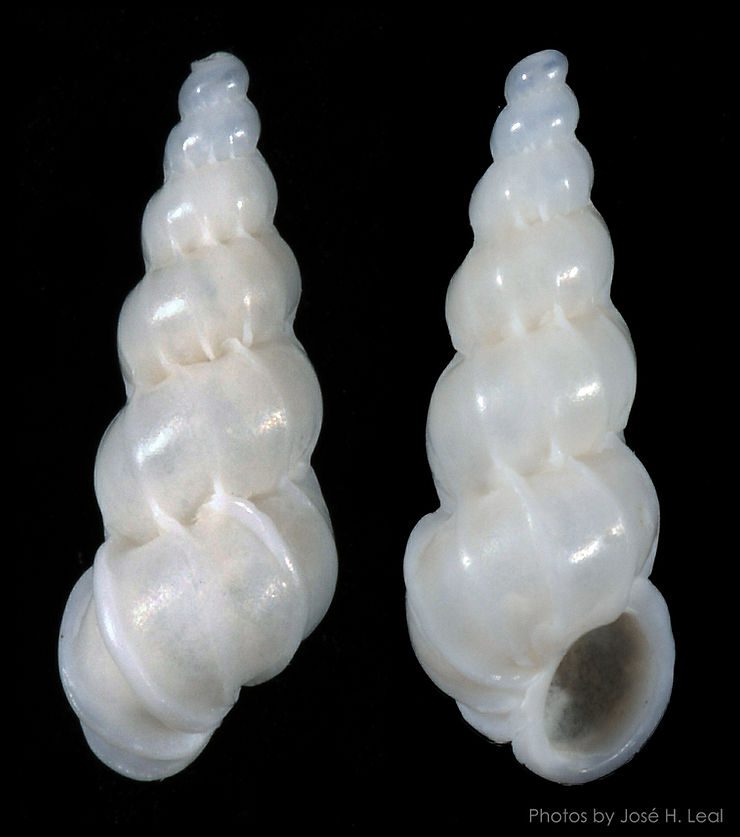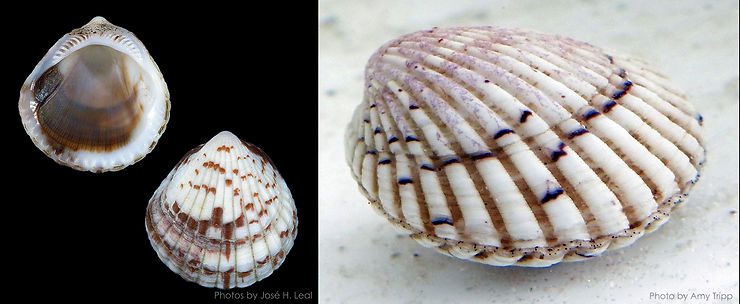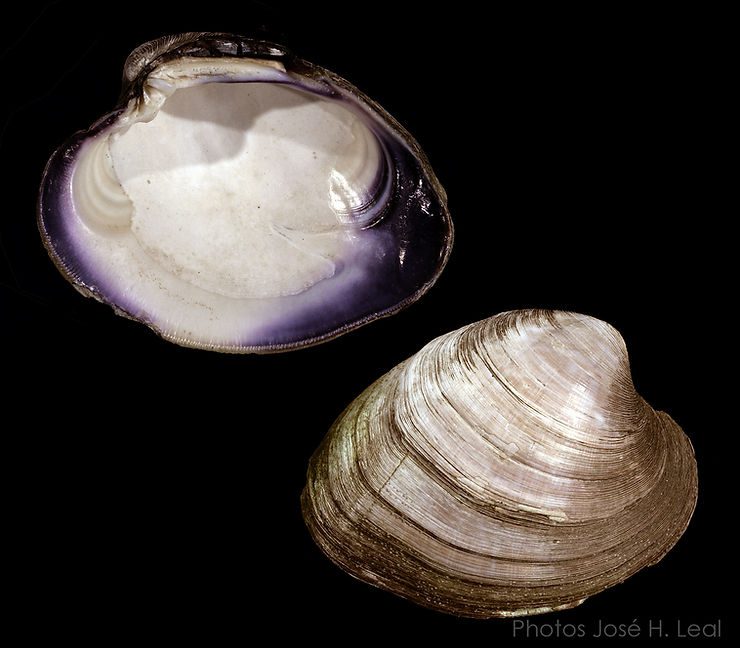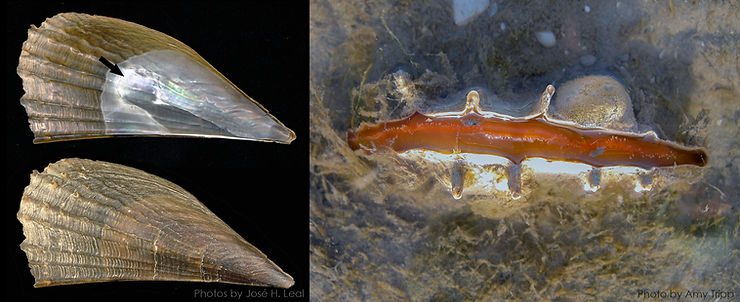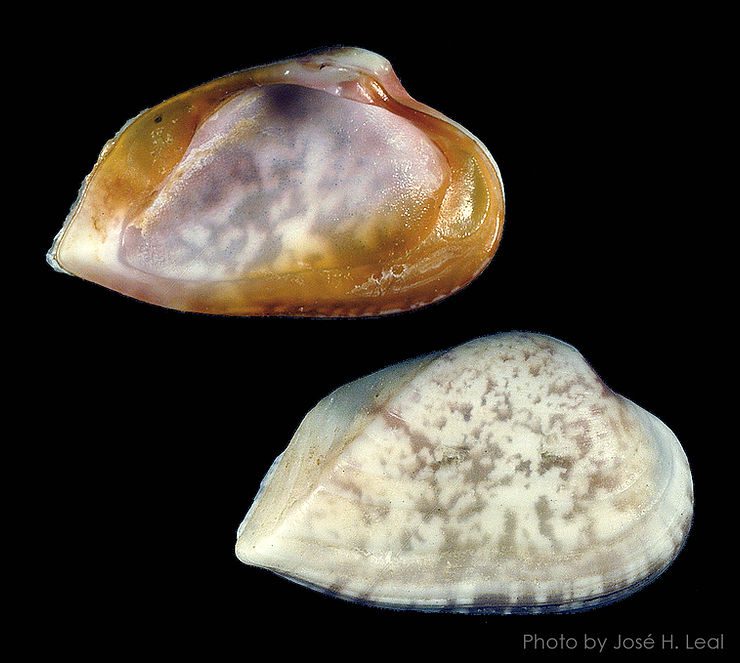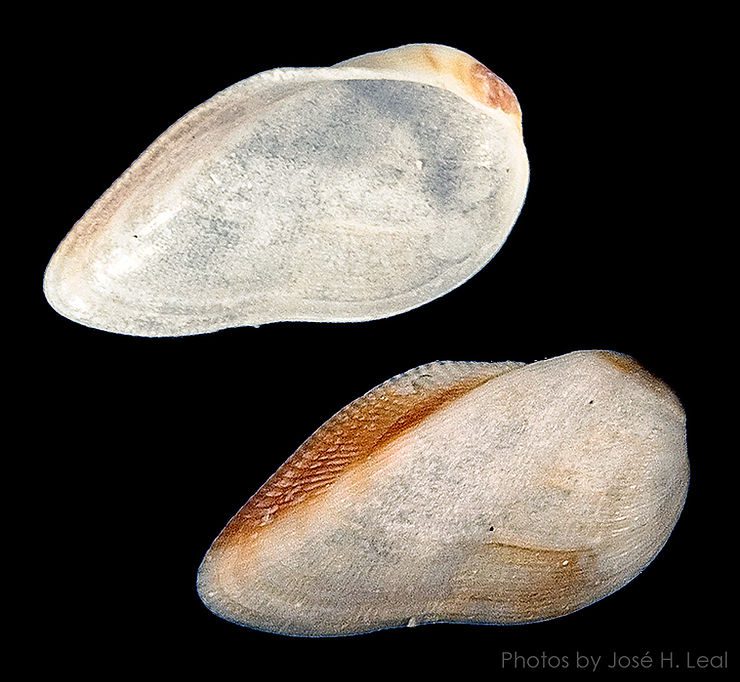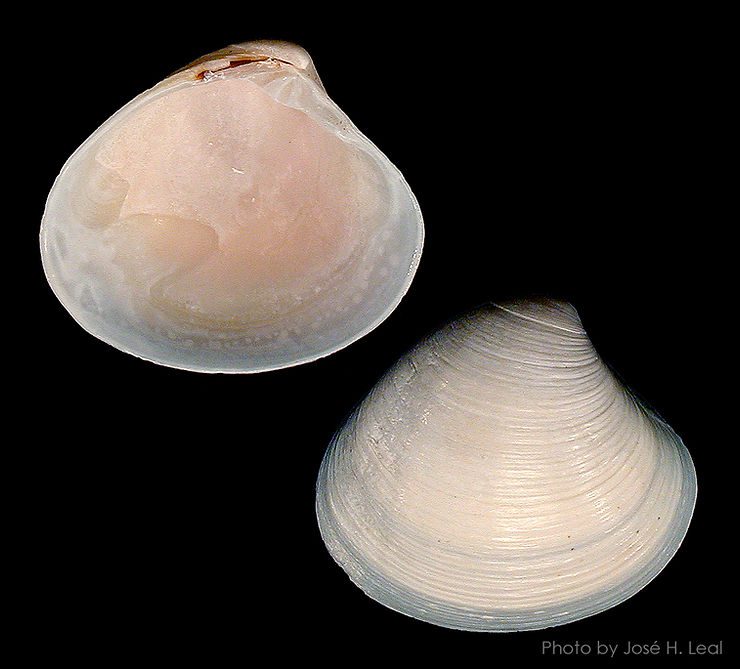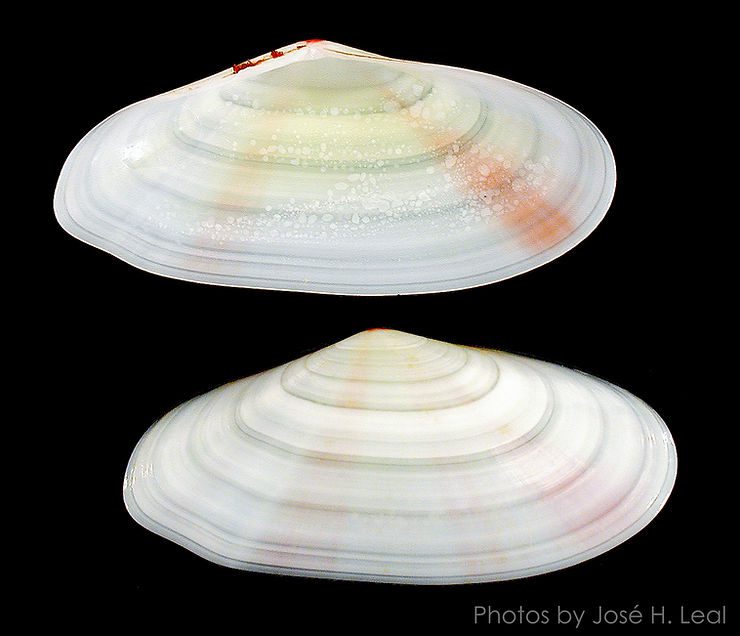
The Sunrise Tellin
The Sunrise Tellin, Tellina radiata Linnaeus, 1758, is likely the most attractive of all tellins (family Tellinidae) found in the western Atlantic Ocean. Its shell is large (up to 65 mm, or about 2.5 inches), glossy, and delicately colored with yellow hues and reddish radial stripes that resemble rays of the rising sun. Its presence on Sanibel and Captiva, however, is questionable—only four entries of the species from the islands exist in the National Shell Museum collection, all collected prior
